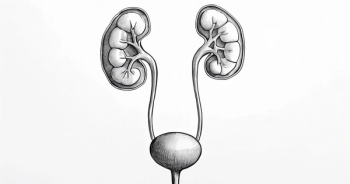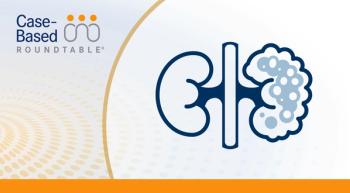
Peers & Perspectives in Oncology
- June I 2025
- Volume 3
Comparing VEGF TKI/IO Vs IO/IO Combination Efficacy in Metastatic RCC
During a live event, Guru P. Sonpavde, MD discussed first-line renal cell carcinoma regimens with varying efficacy and toxicity profiles.
This article is part 1 of a 2-part series from a Case-Based Roundtable event.
CASE SUMMARY
- A 65-year-old man presented with back pain for past 6 months and hematuria for 1 week.
- Laboratory results: hemoglobin, 11.4 g/dL; lactate dehydrogenase, 980 U/L; all others within normal limits
- CT of chest/abdomen/pelvis: multiple mediastinal and hilar nodes, deposits in left lower lobe of lung, enlarged axillary nodes, and enhancing mass in left renal parenchyma with renal vein infiltration; lytic destruction of L4 and L5 vertebrae, left superior pubic ramus, and right ischium
- Biopsy of renal mass and bone biopsy confirmed metastatic clear cell renal cell carcinoma (RCC).
Targeted Oncology: What are some of the first-line regimens that are being used right now for patients such as this with clear cell RCC?
Guru P. Sonpavde, MD: In clear cell RCC, there's ipilimumab [Yervoy]/nivolumab [Opdivo] in CheckMate 214 [NCT02231749],1 and then axitinib [Inlyta]/pembrolizumab [Keytruda] in KEYNOTE-426 [NCT02853331].2 CheckMate 9ER [NCT03141177] is the cabozantinib [Cabometyx]/nivolumab combination,3 and then you have lenvatinib [Lenvima]/pembrolizumab in the CLEAR trial [NCT02811861].4 They're all phase 3 trials, and in all of these trials, the standard arm was sunitinib [Sutent].
The patient populations are somewhat similar. The ipilimumab/nivolumab trial was a little different than the other trials in that the primary end point was looking at only intermediate- and poor-risk disease. So that way it's different from the other VEGF tyrosine kinase inhibitor [TKI]/immunotherapy [IO] combinations, in which the primary end point was progression-free survival [PFS] and sometimes overall survival [OS] in one of the trials, looked at patients across the board, regardless of the risk group. So those 3 trials are somewhat similar compared with ipilimumab/nivolumab, which was slightly different. Although all trials had all of the risk groups included, the good risk group is the minority of patients in all these trials.
What was the efficacy in these RCC combination regimen trials?
When you look at the median OS in the intention-to-treat [ITT] overall group, the general theme is that they're hanging around the 4-year time point. The median survival in all of these groups put together the ITT is around 4 years, give or take a few months. So that's where we reach compared with historically where first-line sunitinib was used, and the median OS is first around [2 to 3] years at that point. So we nearly doubled the median OS with these potent combinations.
When you look at the overall response rate [ORR], ipilimumab/nivolumab is hanging around the 40% range,1 whereas for the VEGF TKI/IO combinations is somewhere around 60%.2-4 Lenvatinib/pembrolizumab somewhat sticks out a bit at 71% ORR,1 but it's a higher response rate compared with the ipilimumab/nivolumab regimen.4
How did the rates of progressive disease (PD) differ among these therapies?
For PD as the best response, ipilimumab/nivolumab is a bit different than the VEGF/IO regimens. Close to 20% had progressive disease as the best response.1 That's why some of us worry about progression in a patient with bone metastases, so you would want to do cabozantinib/nivolumab in that situation. When we look at the VEGF TKI/IO regiments, PD as best response is lower; 5% with lenvatinib/pembrolizumab, 7% with cabozantinib/nivolumab, and 12% for axitinib/pembrolizumab.2-4 So it's in the 5% to 10% range, and not closer to 20% like with ipilimumab/nivolumab.
What was the toxicity profile for patients with RCC on these trials?
With the VEGF/IO regimens, when you combine all the grade 3 to 4 toxicities, you're getting into the 60% to 70% range. While with ipilimumab/nivolumab it's lower; when you add up all the grade 3 and 4 toxicities, it's 48%.1 When you look at discontinuation due to adverse events, for the ipilimumab/nivolumab regimen was 24%. For the VEGF TKI/IO regimens, there's a little bit of a range, but that also tends to be in the 20%.2-4








































